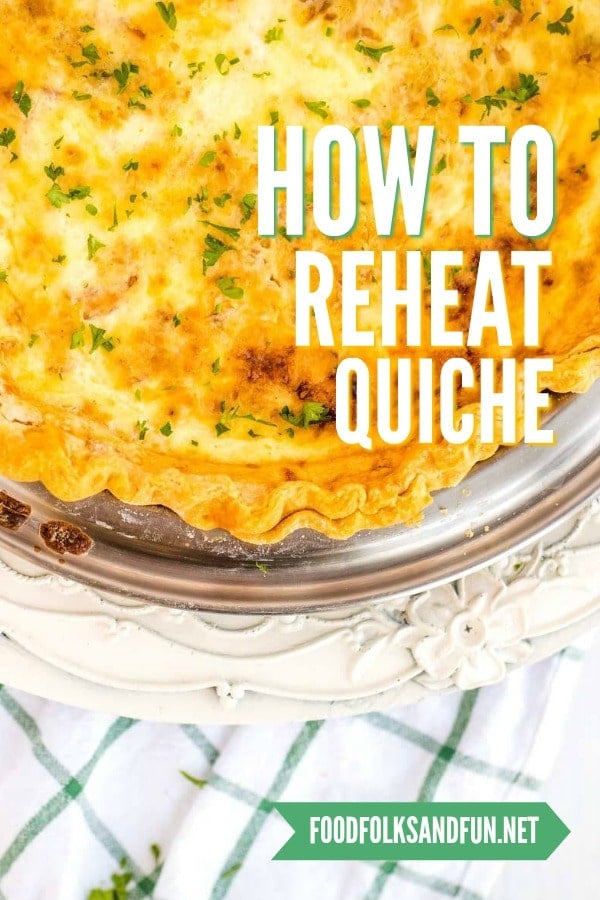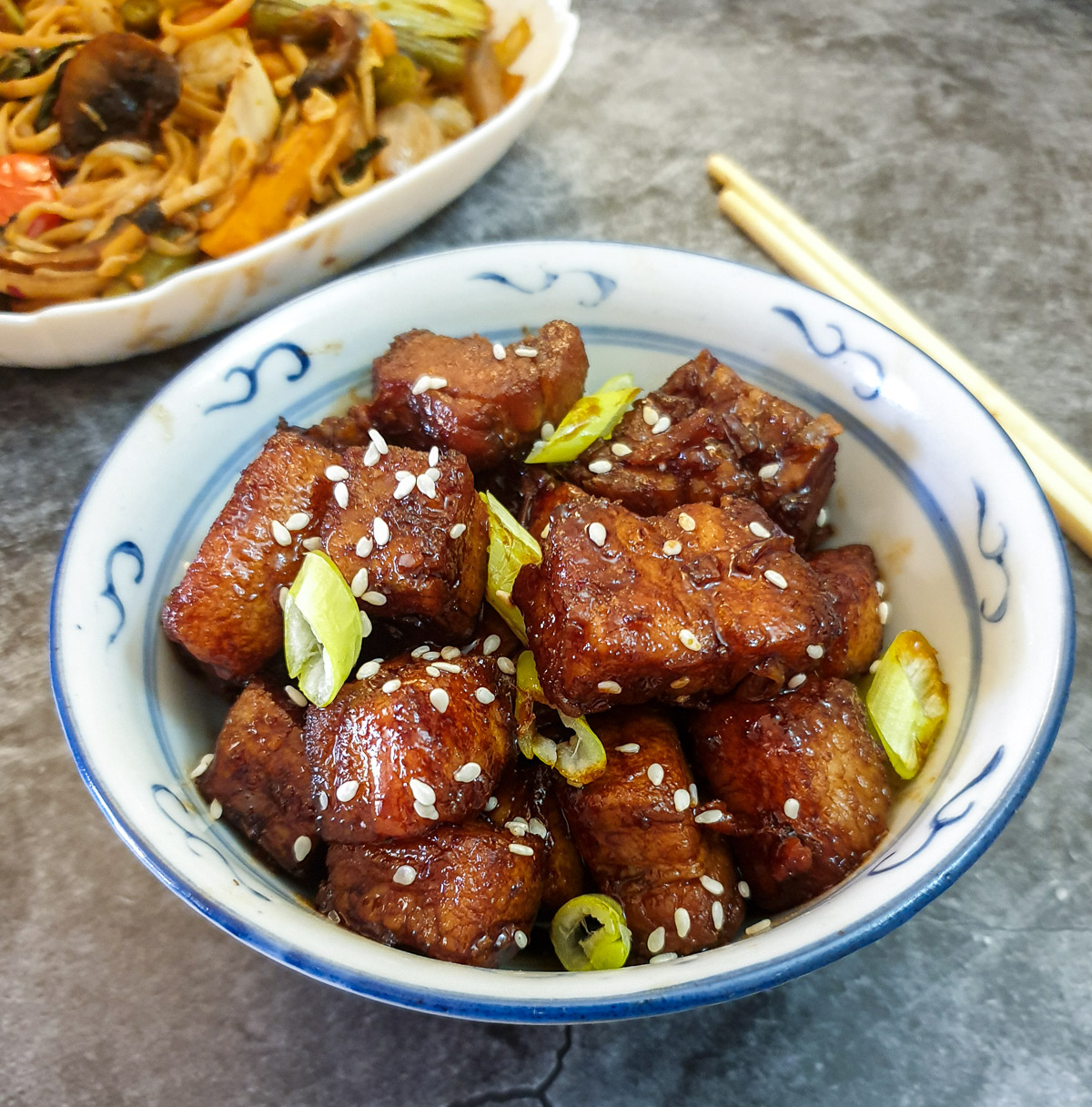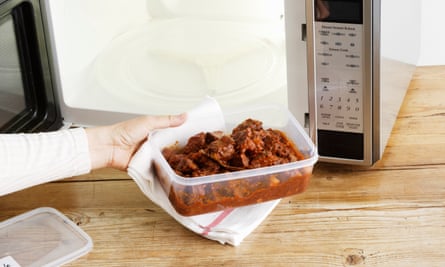Have you ever found yourself with leftover quiche, pondering whether it’s safe to reheat it more than once? You’re not alone.
Many of us enjoy the savory delight of quiche, a dish that’s as versatile as it is delicious. But when it comes to reheating, especially for the second time, the stakes are high. Your health and taste buds are both on the line.
Imagine savoring the creamy texture and rich flavors again, without compromising on safety or quality. You want to enjoy that perfect slice, but a nagging question lingers – can you reheat quiche twice without risking food safety? This article is your go-to guide, unraveling the mystery and offering you peace of mind. Let’s dive into the nitty-gritty details that will help you make an informed decision, ensuring every bite is as delightful as the first. Keep reading, because what you learn here might just save your meal – and your day.

Credit: foodfolksandfun.net
Table of Contents
Reheating Quiche: Basics
Quiche is a tasty dish. Reheating quiche keeps it yummy. Warm it well for safety. Use an oven or microwave. Ovens work best. They heat quiche evenly. Set the oven to 350 degrees Fahrenheit. Heat for 15 to 20 minutes. Check if it’s hot inside. Microwaves are faster. But they can make quiche soggy. Use a medium power setting. Heat for one to two minutes. Check and stir if needed. Avoid reheating quiche twice. It may taste bad. The texture changes. Bacteria can grow. Be careful with leftovers. Store quiche in the fridge. Eat it within three days. This keeps it fresh and safe.

Credit: www.foodleclub.com
Safety Concerns
Reheating quiche twice is risky. Bacteria may grow if not careful. Quiche contains eggs and milk. These can spoil quickly. Heat kills some germs but not all. Reheating again might not be safe. Illness can happen if food is spoiled. Stomach pain or feeling sick might occur. Proper handling is important to stay healthy.
Always heat quiche to safe temperatures. Use a thermometer to check. 165°F is the safe temperature for eggs and milk. Cool quickly in the fridge after cooking. Reheat only once to be safe. Avoid reheating twice to prevent sickness. Follow guidelines for safe eating.
Methods For Reheating
Reheating quiche twice is possible, but you must take care. Keep it chilled in between reheats. Ensure it’s heated thoroughly each time to maintain safety and taste.
Oven Heating
The oven keeps quiche warm and crispy. Set oven to 375°F. Cover quiche with foil. Place on middle rack. Heat for 15-20 minutes. Check if warm inside. Be careful! Hot.
Microwave Use
Microwave is quick. Put quiche on plate. Cover with a microwave-safe lid. Heat for 2-3 minutes. Check if it’s hot enough. It can get soggy.
Stovetop Technique
Stovetop is easy. Use a non-stick pan. Heat at low temperature. Cover pan with lid. Warm quiche for 5-7 minutes. Check often. Quiche should not burn.
Quality Considerations
Quiche texture can change after reheating. The crust may get softeror soggy. Eggs inside might become rubbery. This happens because heat affects food moisture. It is important to reheat carefully. Use a gentleheat setting. A microwave can make it worse. An oven is a better choice. Keep an eye on the time. Shorter times help maintain texture.
Reheating quiche can change its flavor. Some spices might become stronger. Other flavors might fade away. Cheese may taste different. Overcooked eggs can smell bad. It is best to reheat once. Every reheat can make flavors strange. If quiche tastes odd, it is time to stop reheating. Enjoy fresh quiche for the best taste.
Best Practices For Storage
Cooling quiche is very important. Right after cooking, let it cool. Room temperature is best. Place it on a rack. This helps air flow. It cools faster. Don’t leave it out too long. Bacteria can grow if left out.
Wrap quiche tightly. Use plastic wrap or foil. This keeps it fresh. Also stops odors from mixing. If freezing, double wrap it. This protects from freezer burn. Label it with a date. Then you know when it’s safe to eat.
Signs Of Spoilage
Check the quiche for mold or discoloration. Mold often appears as fuzzy spots. Discoloration may include brown or black patches. These are clear signs of spoilage. Fresh quiche should look uniform in color. It should not have any unusual spots. Wet or slimy texture is also a bad sign. If the quiche looks strange, do not eat it.
Smell the quiche before eating. A sour or rotten smell means it is spoiled. Fresh quiche smells buttery and cheesy. A bad smell is a warning sign. Spoiled quiche can make you sick. Always trust your nose. If the smell is off, throw it away. Your nose knows best. Keep your food safe.
Expert Tips
Quiche can lose freshnessafter reheating. Keep it in the fridge. Wrap it in foil or use airtight containers. This keeps flavors locked in. A tight seal helps a lot. Make sure it’s not in the fridge for over two days. Reheating many times can dry it out. Warm it slowly for the best taste. Use a low oven temperature. This keeps the quiche from becoming rubbery.
Cut quiche into small pieces before storing. This helps with even heating. Only reheat what you will eat. Smaller portions keep well. It helps avoid waste. Planning portions can save time. Enjoy fresh slices every time. Keep portions similar for even warmth.

Credit: www.theguardian.com
Conclusion
Reheating quiche twice is possible, but exercise caution. Each reheating can affect its taste and texture. Always store your quiche properly in the fridge. This helps maintain freshness and safety. When reheating, ensure it reaches the right temperature. This prevents any harmful bacteria growth.
Quiche is a versatile dish, so enjoy it safely. Remember, freshness is key to flavor. Keep your quiche delicious and satisfying. Eating with care ensures the best experience. By following these tips, you can savor your quiche again. Enjoy your meal without worry.
Always prioritize food safety.

I am Brianna, a self-published author with a passion for sharing my knowledge and expertise on various topics with people looking to find the perfect items for their needs. I love ensuring that the right informative content is available to people looking for the right information. I am an avid horseback rider and reader when I am not writing.
Follow me on Facebook, TikTok, or Personal Blog.